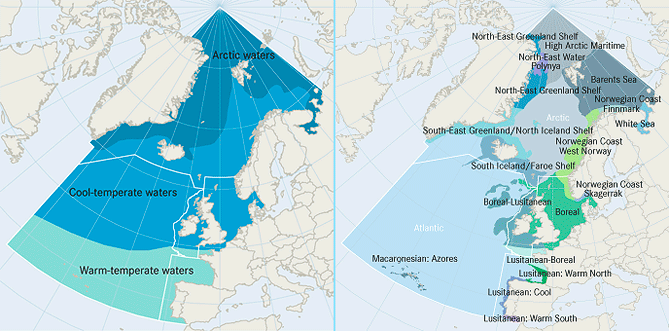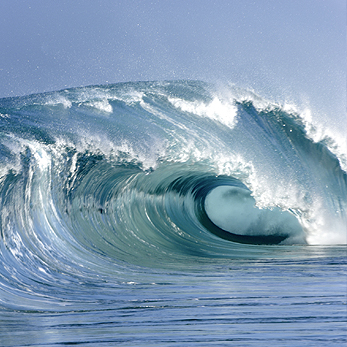The Dinter Biogeographic Classification divides the seafloor, the deep sea and open oceanic waters into a series of representative biogeographic zones, each having a specific oceanography which supports characteristic biological communities. Source: Dinter, W.P. (2001).
Left: The water column less than 1000 m depth is divided into three characteristic biogeographic zones for the pelagic environment.
Right: Biogeographic zones for the benthic and deep-sea environments. The deep-sea benthos and deep-sea environments (>1000 m) are separated into two broad zones: Arctic and Atlantic, separated by the Iceland-Faroe Shelf. The benthic environment less than 100 m depth is separated into a series of characteristic zones.


